Last weekend, Conveyor Editor Sylvia Hardy traveled down to Marfa, Texas for The Chinati Foundation’s 25th Anniversary Weekend, which was celebrated with special exhibitions by Hiroshi Sugimoto and Jean Arp. Here she looks at new work by Sugimoto and Bettina Landgrebe and reviews an exhibition opening for the Chianti Foundation’s current Artist in Residence, Justin Almquist.
Despite the fact that everything in Marfa, Texas looks like an art installation or a stage set—think neighboring “Untitled, Prada Marfa” 2007 by Elmgreen and Dragset and the film Paris, Texas by Wim Wenders—this past weekend, the odds that you were actually driving by an art installation were extremely high.
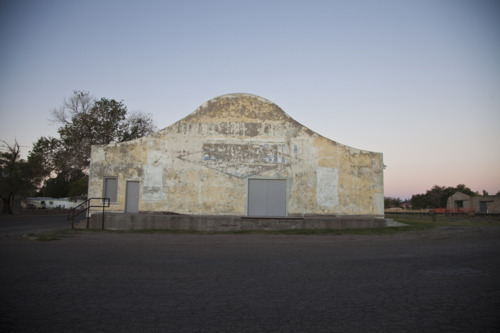

Hiroshi Sugimoto
Hiroshi Sugimoto used this opportunity to show work from his new Pagoda series; sculptures made from optical glass and photographic film. While the seascape is a well known motif in Sugimoto’s photography, this exhibition features seascapes set into optical glass within the part of a pagoda traditionally used to house the Buddha’s ashes or other sacred relics. The works’ small size was out of character for Sugimoto. He joked that if he could not match the largeness of Donald Judd’s sculptures, he would compete through a created sense of intimacy and fragility. Judd’s sculptural works inspired Sugimoto when he emerged as a conceptual artist in the 1970s. Asked whether his new pagoda works reach the artistic level of Judd’s concrete works, which are permanently installed on the Chinati grounds, Sugimoto replied, “That is for the viewer to decide.”

Justin Almquist
The Chinati Foundation’s current Artist in Residence, Justin Almquist, is a native Texan with a BFA from Pratt and an MFA from the Munich Academy of Fine Arts.
His exhibition titled You don’t have to scratch me to get meat opened at the Locker Plant on Saturday night, and was labeled around town as “punk rock art.” His papier-mâché sculptures and pen and ink drawings, which frequently merge into watercolor paintings, had a lot of humor and animal references. There is also something deeply childlike in the work, especially in his skull hats and in his imaginative drawings of bottom feeders. Almquist says he emphasizes these creatures, because he doesn’t think they get enough credit.
The exhibition opening was refreshing and lively, featuring performances by local punk rock groups, the Solid Waste and Foundation for Jammable Resources. It was a typically West Texan musical and aesthetic entwinement of punk rock and hard country.
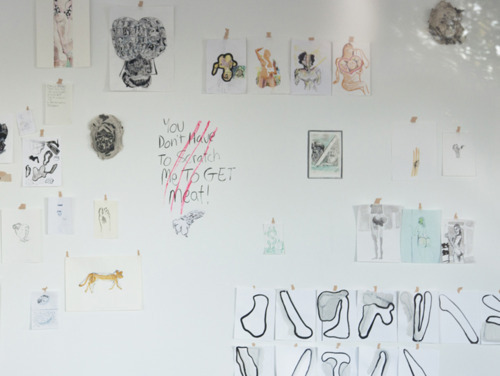
Bettina Landgrebe
Unexpectedly, Bettina Landgrebe took a more direct political tone with her installation Beaten With a Hammer. Each time I drove passed Big Bend Coffee Roasters, no matter what time of day, I couldn’t help but gaze at the mysterious constellation of objects suspended from the ceiling. Finally, I got out of the car and saw the work close up. The constellation fell away to a mass of individual plaster hearts, each inscribed with the name, age, date and method of death of a woman killed in Juárez, Mexico. A city just a couple hours drive from Marfa. Landgrebe states that the “476 hearts are testimony to this war… It is not a war contained amongst warriors, but it is a war that devours life and replaces it with human greed and the vanity of power. The physical and psychological warfare perpetrated against women is a testament to this naked disregard for life after war.” In this installation, Landgrebe gives many pieces of information, but what she leaves for the viewer to decide is the “Why?,” especially the “Why” of “Why is there no international outcry?”
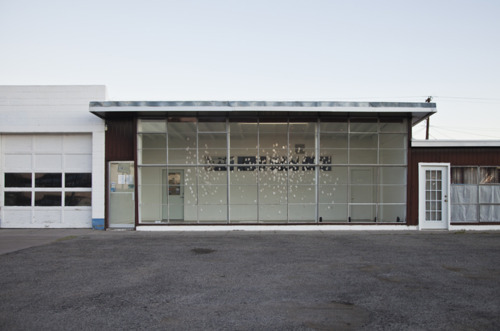


The day after I saw Beaten With a Hammer, I was able to visit with a friend in El Paso. One morning we walked over the pedestrian bridge to Juárez. It was a jarring experience (especially after having just seen Bettina’s piece), but one that I hope helps me further figure out the “Why?”
Bettina Landgrebe is a conservator at Chinati.
For more of Bettina Landgrebe’s work: { http://bettinalandgrebe.com/home.html }
For More About the Chianti Foundation: { http://www.chinati.org }
Conveyor magazine editor-at-large, Elizabeth Bick, spoke with Sasha Bezzubov about his collaboration with Jessica Sucher for their show currently on display at Daniel Cooney Fine Art, Facts on the Ground. Sasha and Jessica will be giving an artist talk at the gallery this Saturday, October 15th at 3pm!
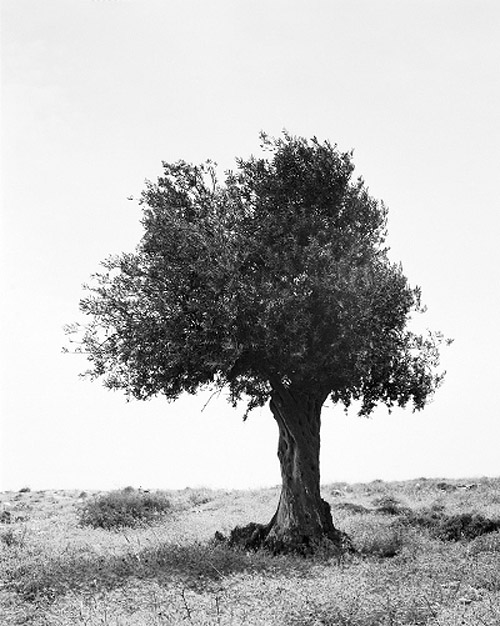
With their series of landscape photographs, Facts on the Ground, Sasha Bezzubov and Jessica Sucher respond to the familiar yet affecting press photos, which depict the suffering and violence of the Israeli-Palestinian conflict. Bezzubov and Sucher approach the conflict in a nuanced and descriptive way, creating images that permit the contested terrain to speak for itself. Their work represents the land as a retainer of history. The two artists photographed the remains of Palestinian villages that Israeli forces destroyed in the wars of 1948 and 1967. They also photographed the occupied territories, where Israeli settlers and the Israeli army continue to dispossess Palestinians of their land and Palestinian farmers of their the olive trees.

Bezzubov and Sucher used a large format camera and created large-scale prints in an attempt to depict these scenes in a way that mainstream journalism cannot. The power and scale of landscape photography allow a seemingly simple image to offer the viewer multiple modes of interaction. As the viewer transitions from one mode to the next, subterranean meanings unravel over time.

CM: The upcoming issue of Conveyor Magazine is on the theme of Mapping. Obviously, this particular project deals with several forms of mapping, territory, borders, possession. Can you talk more about the significance of mapping with respect to the land you represent in your series?
SB: The term, “Facts on the Ground” refers to the political idea that the creation of physical realities (i.e. the building of Israeli settlements in the Occupied West Bank)—though illegal according to international law—will become impossible to undo and will result in the continual annexation of Palestinian land. So mapping, territory, borders, history and possession are an integral part of this project and the conflict. The creation of the state of Israel, which accompanied the violent destruction of some 500 Palestinian villages, towns and cities, and the forced removal of some 750,000 Palestinians, was accompanied by a massive re-mapping and re-naming project. According to the new rulers, Palestine had to be “Judaized,” the names of every geographical feature had to be changed in order to comply with the often manufactured biblical past. A truly Orwellian committee (The Government Naming Committee) gave the newly found state an ancient pedigree. Many wars later, the map of the region continues to be redrawn.
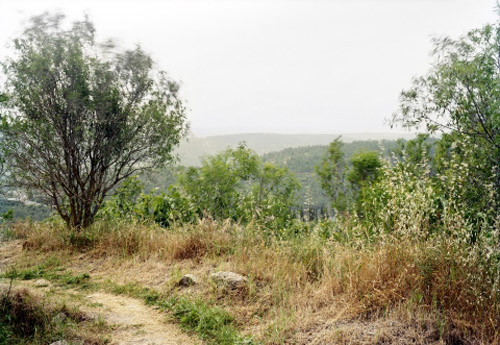
CM: What interests you about photography and mapping? Do you see them as related?
SB: There is a saying, “a map is not the territory.” Similarly it could be said, “a photograph is not the reality.” While they each describe the world in their own manner, through a combination of ubiquity, scientific aura, and social agreement, their role as reliable scientific documents is rarely questioned. But maps and photographs organize the world based on the makers’ vision, politics, tendencies, and loyalties. Both projects can exploit or reveal this aspect of their construction, or perhaps in our case, a bit of both.
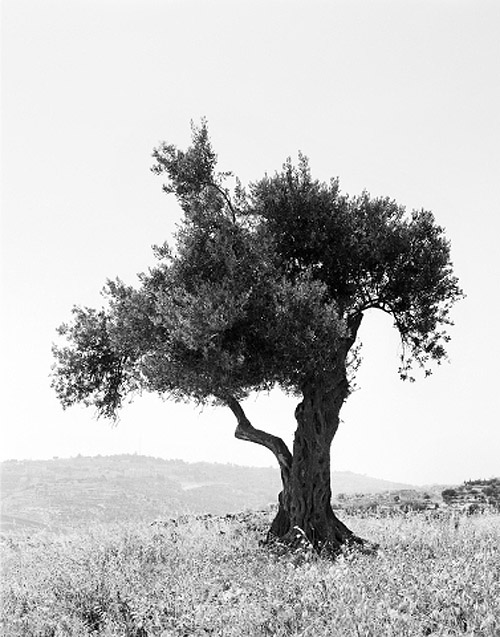
CM: How long have you been collaborating with Sucher? Can you describe some of your other projects?
SB: We began working together on photographic projects in 2002, soon after we became a couple. We have since been married and now have a beautiful three-year-old son. Facts the Ground is our third project as a collaborative team. We have previously worked on The Searchers, a series of four interrelated projects about Western spiritual tourism in India, during a year we spent in India on a Fulbright Scholarship. Our first project is called Expats and Natives. It’s a series of portraits of westerners and their local families in different parts of the developing world. The amount of thought, discourse and argument that goes into every step of our process is something that I have never experienced before.
CM: Now that Facts on the Ground is finished and on display, what effect do you hope it will have?
SB: We are really interested in creating a conversation with this work. We have few illusions that our exhibition and project will affect change in either Israeli policies or the unquestioning support of the United States for these policies. But we do hope that the work will continue to bring attention to this topic and inspire others to continue revealing the great injustice of the Israeli occupation. The Israeli journalist Gideon Levy, whose writing tirelessly describes the many horrors of the occupation, recently answered a similar question with something to this effect, “I write in order that no one will be able to say, “we did not know.”
FACTS ON THE GROUND will be on view September 8 to October 22th, 2011.
Daniel Cooney Fine Art
511 West 25th Street, #506
New York, NY 10001
www.danielcooneyfineart.com
Conveyor Editor, Elizabeth Bick, was lucky enough to catch up with Tina Barney over dinner. Here she writes about some of the incredible perspectives and insights she gained on the life and work of the photographer.
Tina Barney pioneered a now popular wave of family documentary photography. Well before the masses had begun churning out images of family life for gallery exhibitions and graduate theses, Barney produced the seminal works of this captivating sub-genre.

By the age of twenty-one, Tina had dropped out of her university, travelled to Italy to spend time studying renaissance painting, married rich, and had begun raising two children in her upper-crust, East Coast community. She never finished college and, at that point, she hadn’t ever seriously picked up a camera. After her well-to-do husband moved his young family to a ski resort, Tina decided she needed more in her life than motherhood and icy slopes. She enrolled in a photography class. She was instantly hooked. She started photographing her surroundings, her high falutin friends, her children, other families she knew. ”They all thought I was crazy,” she told me, “I kept shooting.” After several decades of developing tableaux and painterly images of upper class americana, her work has become legendary and, to capture the people close to her, she continues to wield a 4x5 camera, heavy tripod and several lights.
When I asked Tina how she feels about the digital revolution, she proclaimed that she has never been interested in anything but large format film cameras and to use that sort of frame in the digital realm is excessive. She feels a photographer who knows what they want only needs a few shots, and those can be captured with the high quality results of a 4x5. ”I have less negatives than you would think,” she explained. My 5D Mark II suddenly seemed like cheap perfume.
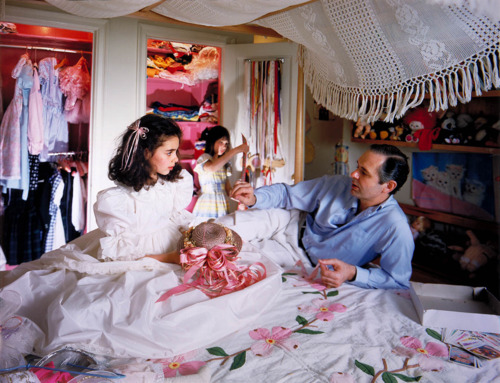

— Elizabeth Bick
Tina Barney was born in New York City in 1945 and is a self taught photographer. Barney’s work is in many public and private photography collections, including George Eastman House in Rochester, The Museum of Modern Art in New York (MOMA), the Museum of Fine Arts in Houson, and the Yale University Art Gallery. In 1990, her work was exhibited at MOMA, and it continues to be exhibited both nationally and internationally.
Anyone with a cell phone appears to be a photographer in the year 2011. An impressive photograph is less and less a product of skill. For the few of us who spend their time perfecting some form of artistic photography, seeing the ease with which the world takes pictures these days is discouraging at best, infuriating at worst.

Camera Obscura: View of Central Park Looking North- Spring, 2010
But when I look at works like those of Abelardo Morell, my frustration with the vulgarity of contemporary photography drifts away. Morell’s technique literally returns to the origins of picture-making: the camera obscura. In this series, Morell turns several rooms across the globe into camera obscuras, projecting a city or landscape through a window onto the interiors of the room in which he stands. He then documents this with an 8x10 view camera, itself an ambitious undertaking. The result—magical and esoteric—puts the common hand held device back in its place. — Elizabeth Bick

View of the Manhattan Bridge-April 30th / Morning, 2010

Camera Obscura: View of the Manhattan Bridge-April 30th / Afternoon, 2010
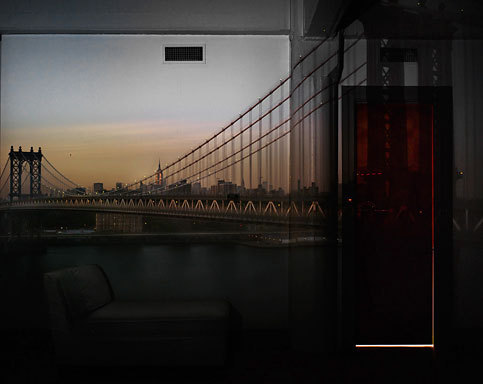
Camera Obscura: View of the Manhattan Bridge-April 30th/ Evening, 2010
—
Aberaldo Morell was born in Havana, Cuba and currently lives and works in Boston, MA. He received his MFA from Yale in 1981. Recent awards include the ICP Infinity Award, The Alturas Foundation Grant and The John Simon Guggenheim Memorial Fellowship.
To view more of his work visit { http://www.abelardomorell.net }
Conveyor is excited to announce the limited edition of Eric Bessel’s Archive {2005-2010}. The publication includes 52 color portraits, a statement from the artists, as well as essays from Kenneth White and Lauren Applebaum. The limited edition book is part of an edition of 10 and paired with an 8 x 10” archival pigment print from Bessel’s Archive.


Excerpt from Consider the lemur: Eric Bessel’s Arrangement of Skin
My portraits are photographs. They are people I meet on the Internet, on the street and in check-out lines at grocery stores. We meet again on park benches, and doorsteps. They like to snap my picture after I’ve taken theirs.
Eric Bessel demands the utmost precision of hue, contrast, and detail from his photographs. Indeed, they are immaculate. But his attention to, one might even suggest obsession with, the formal attributes of his art appears pressed into the service of the content of his exposures, the subjects within his frame. Not, that is to say, into the advancement of a personal aesthetic arising from the inherent capabilities of the medium itself. “My portraits are photographs,” Bessel plainly writes in his work statement. Following such a remark, that he takes photography as his medium might be mistaken as a perfunctory choice, as some kind of defaulted course, not unlike the casual postures of his subjects, their returned eye contact notwithstanding….

Pets, 2010
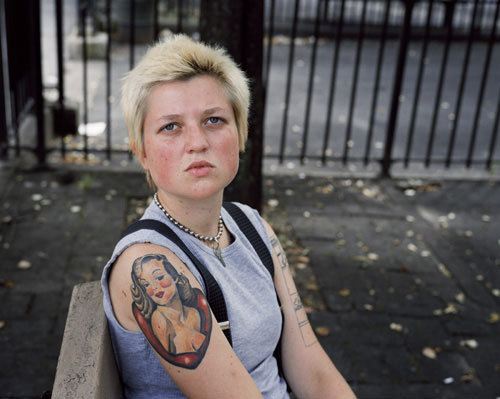
Young woman with shoulder tattoo, 2009*

A taxidermied lemur, Cleveland, 2009*
… Bessel composes his own ever expanding, and quietly perverse, museum of natural history – or, as Jorge Luis Borges might describe it, book of imaginary beings. Borges remarks that, “As we all know, there is a kind of lazy pleasure in useless and out-of-the-way erudition.”2 In Bessel’s art, we grasp the significance of the pleasure of such erudition in its mode of accumulation; we realize that ennui is not laziness, but in fact very hard work. And what of the order of the apparently useless and out-of-the-way, that is, what of the lemur-foxes? Benjamin closes “Little History of Photography” by ruminating on Atget’s photographs-as-crime-scenes, absent of persons. “But isn’t every square inch of our cities a crime scene? Every passer-by a culprit? Isn’t it the task of the photographer – descendent of the augurs and haruspices – to reveal guilt and to point out the guilty in his pictures?”3 We might do well to learn from the lemur-fox that we too are culprits courted, hiding in plain sight. Perhaps not stuffed and displayed in a Cleveland vitrene, but one of a similar nature. Indeed, one cannot help but recognize oneself, in mid-performance, striking a pose for the photographer in preparation for the next micro- revelation. The portraitist by way of photography cuts to the very site of social discovery, and its easy, though one might argue not quite inevitable, turn to culpability. For who is the photographer but a surgeon, applying the scalpel of his camera to the world of social relations. Bessel labors in his ostensibly simplistic arrangement of humans, pets, and otherwise, to peel back, to empty out, the layers of circulation potential until all that remains is performance, his own and his subjects. Such is a fascinating closed circuit of micro-revelations. Eric Bessel is a photographer who makes portraits.
Kenneth White
Palo Alto, November 2010
—
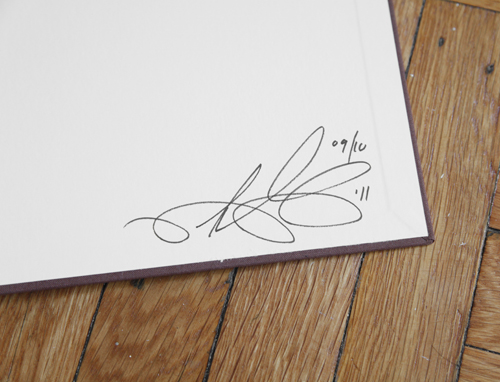

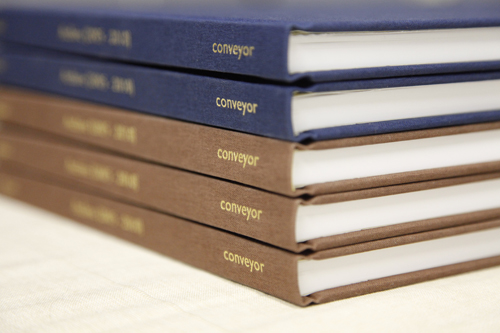
Eric Bessel
Archive { 2005 -2010 }
Published by Conveyor, 2010
Hardcover
122 Pages
52 Color Images
Essays by Kenneth White and Lauren Applebaum
Original Edition: $55.00 { Purchase }
Limited Edition of 10: $90.00 { Purchase }
These photographs are available upon purchase of the Limited Edition*
The Map After Nature
Happenings: La Carte d’après Nature, curated by Thomas Demand
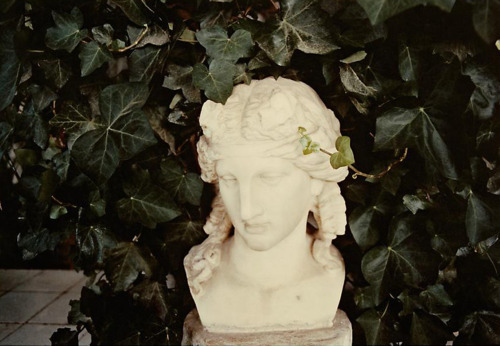
Luigi Ghirri, Capri, 1981.
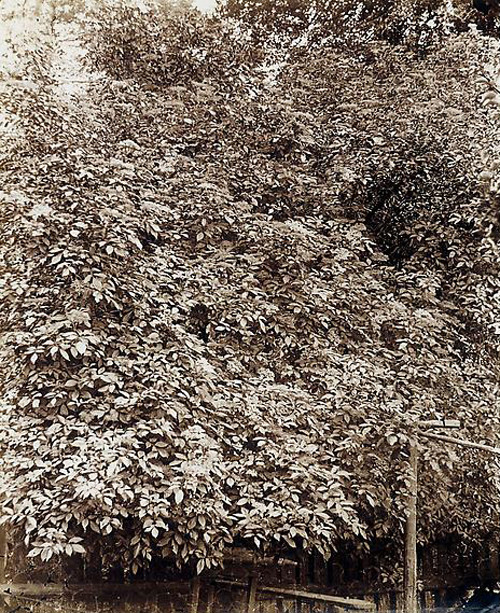
August Kotzsch, Fliederblüthen (Lilac Blossoms), 1870, Albumen Print.
Is photography inherently indexical? Are images ever a representation of reality? Or are they just a construct of human limitations in relation to their surroundings? These are the questions one may ask while wandering through the eclectic and somewhat cacophonous maze of installed video, sculpture, vintage photographs and sound installation curated by the notorious Thomas Demand.
The title La Carte d’apres Nature reveals Demand’s engagement with the limitations of photography as a form of indexical mapping and whether photographs can be evidence of a certain place in a specific time.
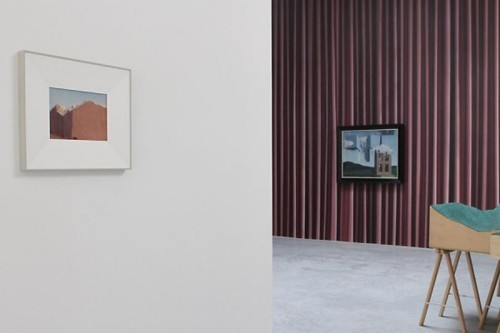
The pictures included by photographers Luigi Ghirri, August Kotzch, Leon Gimpel and others point to the archival and indexical nature of photography, forming a sort of documentary with a vernacular aesthetic. However, the juxtaposition of the photographs with Saadane Afif’s “Strategy of Anxiety,” a sculptural topography, or the green octagonal windows that display vignettes of other installed works, reveals the myopia inherent in the attempt to use photography as an objective document of space and time.
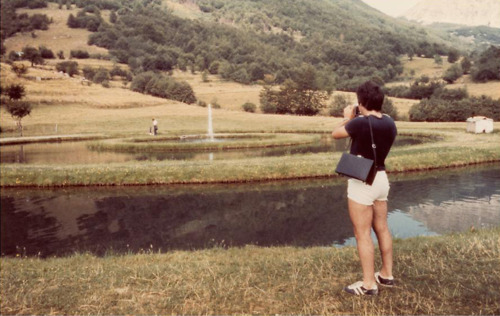
Luigi Ghirri, Rifugio Zamboni, Reggio Emilio, 1972.
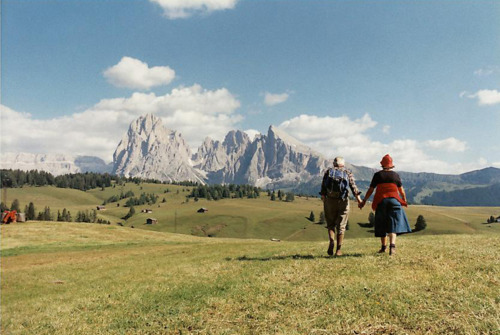
Luigi Ghirri, Alpe di Suisi, 1979.
By invoking contemporary concerns, such as the fragility of the planet and the future of humankind (not to mention the rumor of an apocalypse, which, according to the Mayan calendar, is set to approach us next year), Demand may just be indulging in his own version of life after humankind, a futuristic fantasy in which maps will be obliterated along with the human consciousness. — Elizabeth Bick
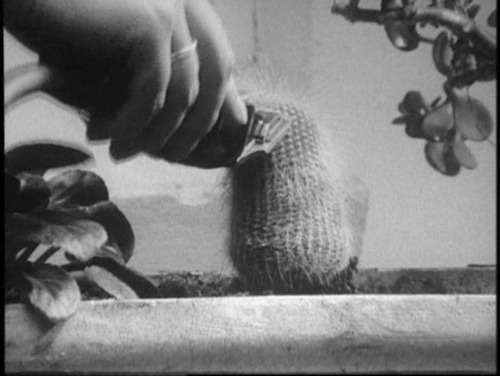
Ger van Elk, The Well-Shaven Cactus still, 1970.
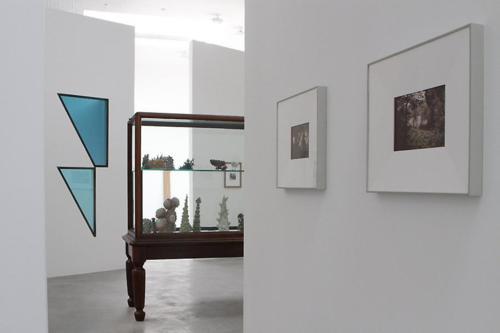

—
La Carte d’après Nature, an exhibition curated by Thomas Demand, will be on view at the Matthew Marks Gallery, 522 West 22nd Street (between 10th and 11th Avenues) through October 8, 2011. Gallery hours: Tuesday through Saturday, 11:00 A.M. to 6:00 P.M.
This exhibition is organized in conjunction with the Nouveau Musée National de Monaco, where it was originally presented last fall, and with the support of the René Magritte Foundation, Brussels. A catalogue with essays by Thomas Demand, Christy Lange, Tacita Dean, Rodney Graham, Luigi Ghirri and René Magritte accompanies the exhibition.
Guest Curator
Corinne May Botz
Deadline for Submissions: October 16th, 2011
Open Call for Submissions for Group Exhibition
The inaugural group exhibition will be curated around the theme Macabre & Mysticism. We are seeking photography, video, mixed media and installation work that exudes a dark romanticism and transcend one’s earthly experience. Inspired by the works of Edgar Allan Poe, Alfred Hitchock and the film noir genre, the theme speaks to both the light and dark qualities of life. From memento mori, mystery and magic to works that communicate to the divine, the dead or otherworldly, we are open to all interpretations of the theme.
All photographic work accepted will be printed and produced at Conveyor Arts.
We’ve posted some images below to get you excited about Macabre & Mysticism:
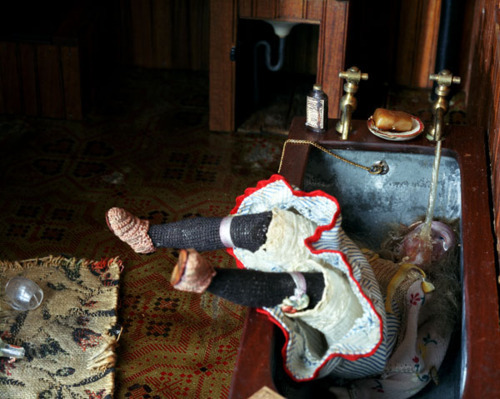
Corinne May Botz, Dark Bathroom.

Nicholas Alan Cope, Still Life.
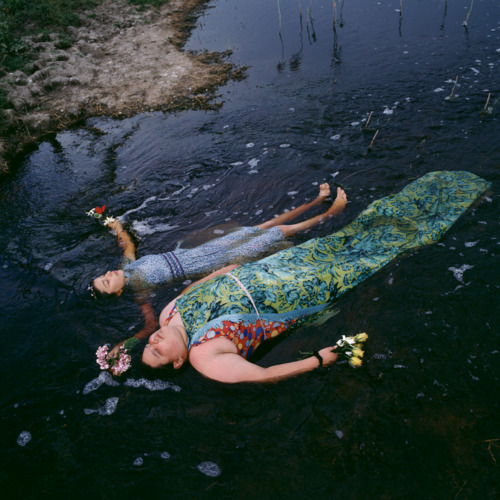
Alessandra Sanguinetti.
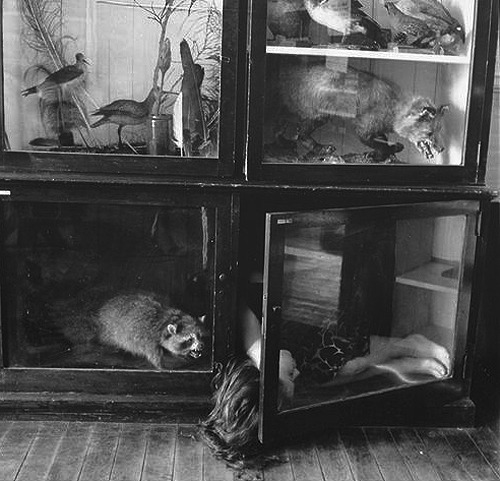
Francesca Woodman.
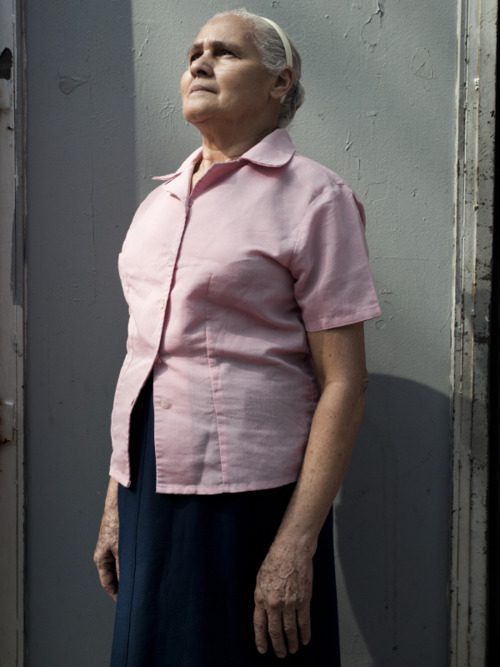
Elizabeth Bick
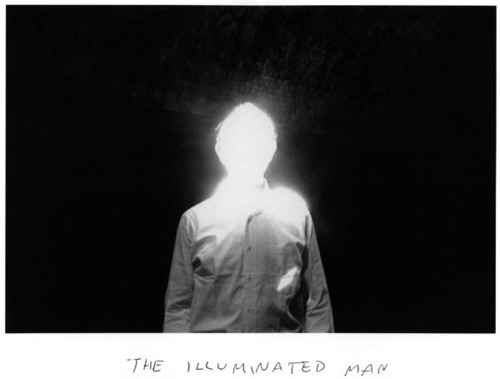
Duane Michals.

Alfred Hitchcock.

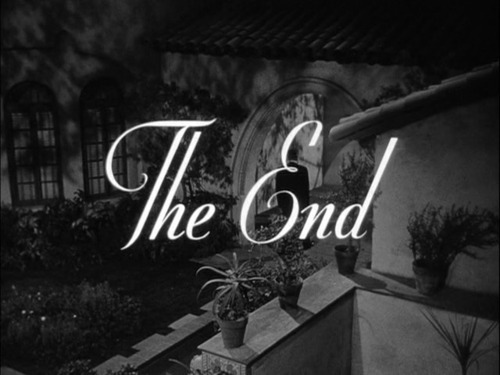
In a Lonely Place.
For More Information Visit: www.redrootsgallery.com